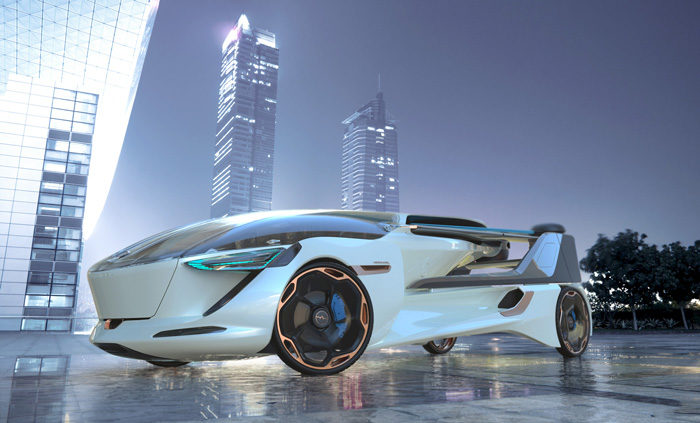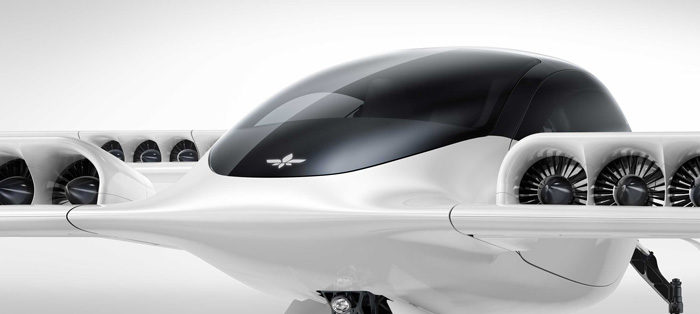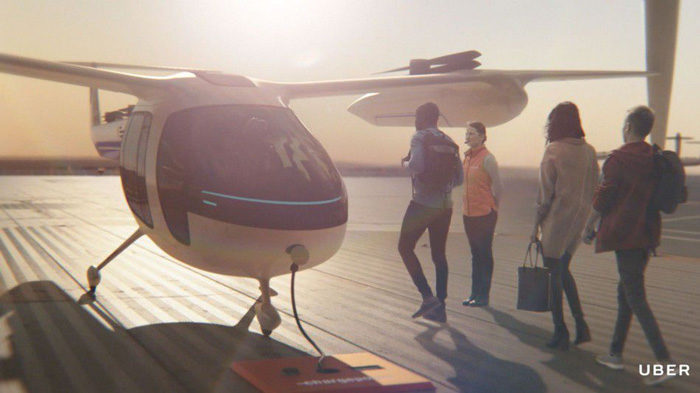1 November 2019
The original Blade Runner film was set in November 2019 in a futuristic Los Angeles. Since the film’s debut in 1982, technology has advanced in ways that the film couldn’t have predicted. But one of the film’s greatest icons, the flying car, has not yet become a mainstream reality. Why not and how close are we to flying cars in the real world of November 2019?
The flying car used in the 1982 Blade Runner film was designed by industrial designer and concept artist Syd Mead. The car operates like a standard road car, but can also take off vertically using thrusters. It can then hover and cruise. Known as spinners, the cars are used primarily in the film by the police department.
Here’s a clip of the vehicle in the film:
Flying cars ARE in development
As demonstrated by the spinner in Blade Runner, vertical take-off and landing (VTOL) designs offer far more convenience than a light aircraft that has to use a runway. Many companies working on flying cars are therefore using VTOL technology to develop their own vehicles. Here’s a run-down on how these developments are progressing.
Slovakian company AeroMobil is taking pre-orders for its 4.0 flying car, which, unlike those using VTOL technology, requires a short runway for take-off and landing. When driven on the road, the vehicle uses a hybrid electric system while the wings stow along the fuselage. However, the company is also developing the 5.0, which will use VTOL technology to eradicate the need for runway facilities.

Terrafugia, a sister company of Volvo and Lotus Cars, is developing the TF-2, a complex multi-part vehicle which will “take-off like a helicopter, fly like an airplane, and drive on the roads”. The vehicle consists of a three-part transportation system with a passenger cabin that’s transported as required by an air vehicle and a road vehicle.
Other companies are focusing on the potential for accessible personal aircraft, rather than cars. Last May saw the test flight of the Lilium Jet, a VTOL aircraft which doesn’t actually have any jets, but instead flies using 36 propellers. The all-electric aircraft can travel up to 186 miles in one hour and has engines designed to be low-noise and low-vibration.

But there are still obstacles to overcome
Fancy buying one of these futuristic flying vehicles? A 2017 study by the University of Michigan found that two-thirds of Americans would like to ride in or fly their own airborne vehicle. Three-quarters of respondents cited shorter travel time as the main advantage.
However, there are a host of regulatory issues surrounding the private use of flying cars. Any machine that can fly off the ground is usually subject to local regulations. For instance, aircraft must be operated under Civil Aviation Authority rules in the UK and Federal Aviation Authority rules in the US. A pilot’s licence is normally required and, for most routes, permission to fly from air traffic control.
Furthermore, there are obvious safety issues if a myriad of flying cars are allowed to take off for diverse, unscheduled trips to work, school or the shops. Ford Motor Co. chairman Bill Ford, when asked about flying cars, said at SXSW: “they had better be autonomous. Most people can’t drive in two dimensions, let alone three.”
There are also potential noise issues and, as technology entrepreneur Eton Musk told Bloomberg: “If somebody doesn’t maintain their flying car, it could drop a hubcap and guillotine you”.
There may be a limit to the mass adoption of flying cars.
An alternative way forward
Flying taxis could be a more practical option. Several of the models currently in development, such as the AeroMobil 5.0 and the Lilium Jet, are primarily designed as air taxis.
Uber has announced plans for its Elevate Network, a flying taxi service that includes a pilot. The service aims to cut thirty-minute journeys in cities to around five minutes. The company is working with local authorities in Dallas, Los Angeles and Melbourne to plan how the service would work in those locations. Launch is planned for 2023.
Uber is partnering with NASA to explore how the flights can be safely controlled. According to Abby Tabor, from NASA’s Ames Research Center: “The goal, known as Urban Air Mobility or UAM, is a safe and efficient air transportation system where everything from small package-delivery drones to passenger-carrying air taxis operate over populated areas.”

Autonomy has been identified by some companies as the key to successful flying taxis.
For instance, Boeing has built and tested an autonomous flying taxi. The electric vehicle uses VTOL technology, enabling its use in urban areas. During recent tests, the prototype completed take-off, hover and landing. Future tests will trial forward, wing-borne flight, plus the vehicle’s transition between vertical and forward-flight modes. According to John Langford, president and chief executive officer of Boeing subsidiary Aurora Flight Sciences: “Certifiable autonomy is going to make quiet, clean and safe urban air mobility possible.”
Airbus has also tested an autonomous flying taxi. The CityAirbus is an electric prototype vehicle that uses VTOL. The four-seat vehicle demonstrator is remotely piloted and capable of 15 minutes of autonomous flying. After launch, its cruise speed will be approximately 75 mph, flying on fixed routes.
The Airbus vehicle is part of the city of Paris’s plans to add flying vehicles to its transport infrastructure. The French capital’s public transport operator, RATP, expects to create an integrated system within five years. Mathieu Dunant, head of innovation at RATP, said that the company is exploring “how we can use existing infrastructures, such as overground RER stations, to which we could add what we call a ‘vertiport,’ which can house such flying vehicles”.

The technology for flying cars, albeit in taxi form, is almost with us. Blade Runner’s original 2019 deadline may have been too optimistic, but the technological, logistical and regulatory barriers appear close to being overcome.








